If you one day find yourself with a transformer that might or might not have a shorted winding, your first inclination for verifying your suspicions might be to find an inductance meter. The problem with powering up an inductance meter for this situation is that the inductance of a transformer containing a shorted turn might not be much different from that of one that’s fine. Thus a reading on an LC meter might not reveal much about the transformer health.
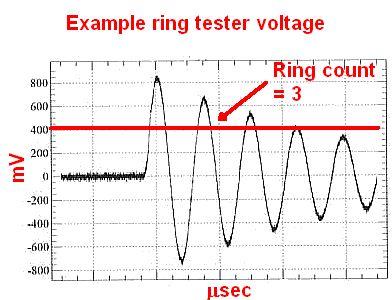
The ring tester checks for Q by applying a pulse to the DUT and then counting the number of cycles in the ringing waveform that results. More specifically, it counts the number of decaying cycles containing energy above a predetermined threshold. The number of cycles above the threshold constitutes a measure of the transformer/inductor Q. Transformers/inductors that are functioning properly will have a high Q; those containing shorted turns, not so much.
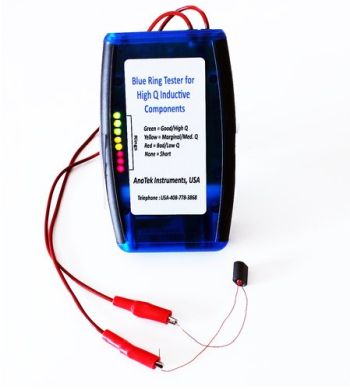
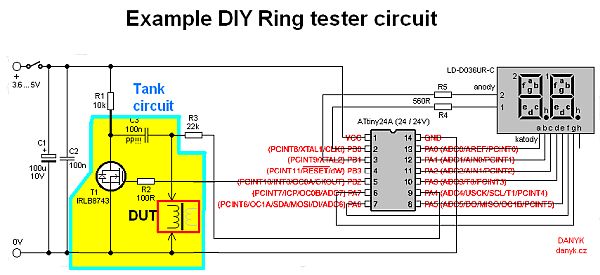
In the ring tester the YouTuber describes, the ringing is set up via an RLC series circuit where the transformer/inductor under test is the L. The C component in this arrangement must have a low dissipation factor (tan δ). The YouTuber recommends a good quality polypropylene film capacitor and cautions that a ceramic capacitor won’t work here, and a polyester cap will only work poorly.
Switching takes place via an N-channel logic MOSFET having a low on resistance (on the order of a few milliohms). The on resistance of the MOSFET actually determines the supply voltage necessary (minus the voltage drop of the MPU output) because the supply must be such that voltage applied to the MOSFET gate ensures operation in the low on state resistance region. For this reason, the YouTuber suggests a 4.8 – 5 V supply voltage, though a quick look at the MOSFET datasheet (IRLB8743) reveals the on resistance would be slightly lower with a 10-V supply. When the transistor is off (about 130 msec), the tank circuit capacitor charges through the series resistor. When the transistor turns on (about 120 msec), the low dissipation factor capacitor is in parallel with the transformer/inductor L, and damped oscillations commence. They are applied to the PA4 input of the MPU through a resistor and they are counted. The sequence repeats every 250 ms while the display gets refreshed at a frequency of about 4 Hz.
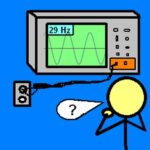


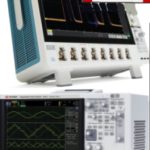


Leave a Reply
You must be logged in to post a comment.